Key Takeaways
- With this “Día de los Muertos: Dates, Traditions, and Festivals” article, prepare your next trip to Mexico stress-free! Día de los Muertos is celebrated on November 1 and 2. Many cities begin the festivities as early as October 31. Time your visit accordingly to catch the entire spirit of the event.
- The holiday pays homage to both children and adults who have died, mixing pre-Columbian and Catholic traditions and emphasizing celebration over sorrow.
- Bright icons like marigolds, sugar skulls, and ornate altars are prominent. Families come together at cemeteries with music, food, and gifts.
- Other hotspots such as Mexico City, Oaxaca, Pátzcuaro, San Miguel de Allende and Mérida provide special activities like parades, art exhibitions and community workshops.
- Celebrate respectfully, take guided tours, study local traditions, and always seek permission before photographing personal altars or ceremonies.
- Reserve your travel and lodging in advance, taste the local cuisine, put on a colorful outfit, and don’t forget the connectivity with a trusted eSIM like Ubigi.
Introduction
Día de los Muertos, or Day of the Dead, is one of Mexico’s most colorful and significant festivities. There are vibrant hues, music, and food as people celebrate those close to them who are no longer with us.
It’s a happy mood, not a sad one. In this primer, we’ll cover when Día de los Muertos occurs, why it’s important, how people celebrate, and where the most vibrant festivals are if you want to participate.
1. When is Día de los Muertos?
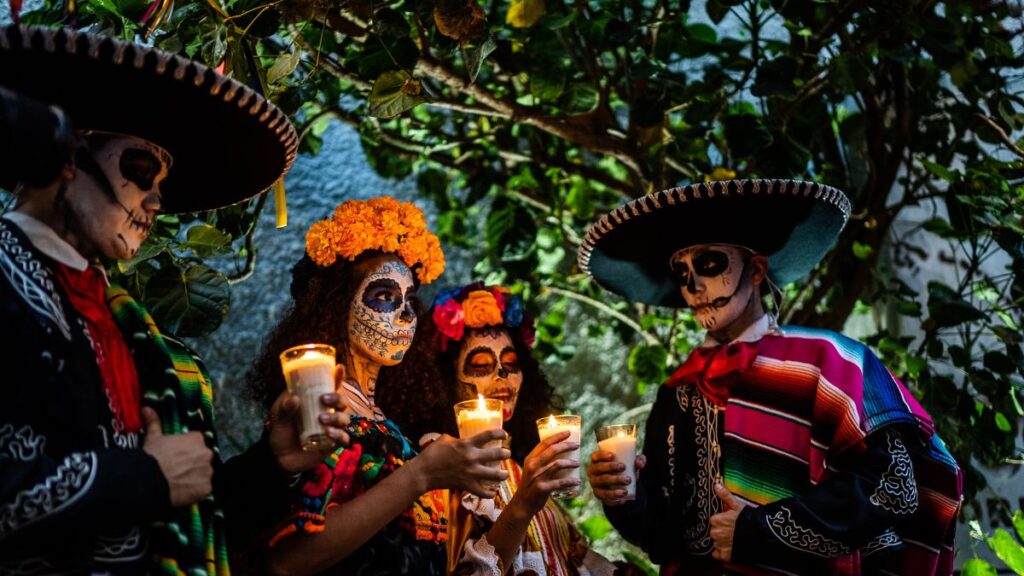
Día de los Muertos occurs annually on November 1 and 2. These dates correspond to All Saints’ Day and All Souls’ Day on the Catholic calendar, known as Allhallowtide. The national holiday’s timing is a testament to the way it melds Christian practices with more ancient customs. Some trace its origin to pre-Hispanic times, while others trace it to a modern interpretation of ancient European traditions.
November 1 is Día de los Angelitos. This day is for you to pay respect to young ones and babies who have passed away. Families establish little altars, occasionally with toys, candies, or images to invite the spirits of young family members.
On November 2, Día de los Difuntos, adults are the focus. On this day, altars are frequently adorned with the adults’ favorite foods, drinks, or keepsakes.
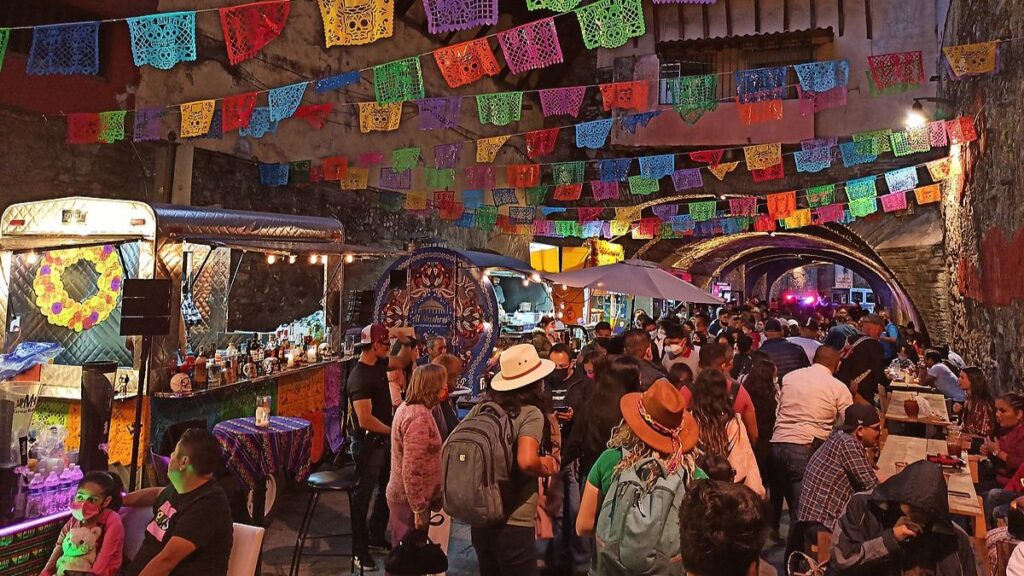
If you travel to many cities in Mexico, you will find that the celebration can start as early as October 31. That’s All Saints’ Eve or Halloween in certain areas. In Yucatan, the celebrations even extend to November 6. These days allow you to participate in various traditions, from altar-making to street parades and candle-lit visits to cemeteries.
Some communities celebrate the main events on alternate days, but most remain faithful to the October 31 to November 2 nexus.
If you want to visit Mexico to experience Día de los Muertos, late October to early November is your ideal window. The weather is temperate in most areas with daytime highs of 22 to 26 degrees Celsius and crisp, cool nights. That in turn makes it easy to wander and find yourself among the crowds.
Popular destinations, including Mexico City and Oaxaca, fill up quickly, so reserve your travel and accommodations well in advance to secure the prime locations.
2. Why and How is Día de los Muertos Celebrated?
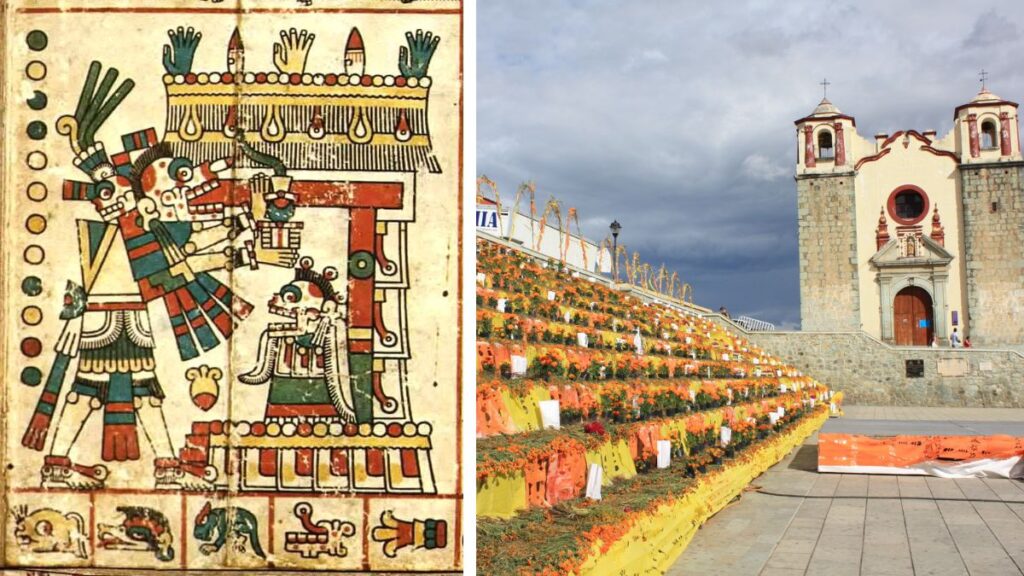
Día de los Muertos is a two-day holiday with origins that are deeply entrenched in both ancient Aztec traditions and the Catholic imposition of Spanish settlers during the early 1500s. The Aztecs revered their ancestors and regarded death as a natural part of the human experience to be embraced, not feared. They observed the departed with festivals, honoring the death goddess Mictlancíhuatl, who guarded their kin in the underworld.
When Catholic All Saints’ and All Souls’ Days came along, these beliefs mixed. They form the current incarnation of Día de los Muertos that you see today. What makes this holiday unique among other traditions is that the focus is on life, not death. You feel it in every detail, from the foods and flowers to the festive music and shared tales.
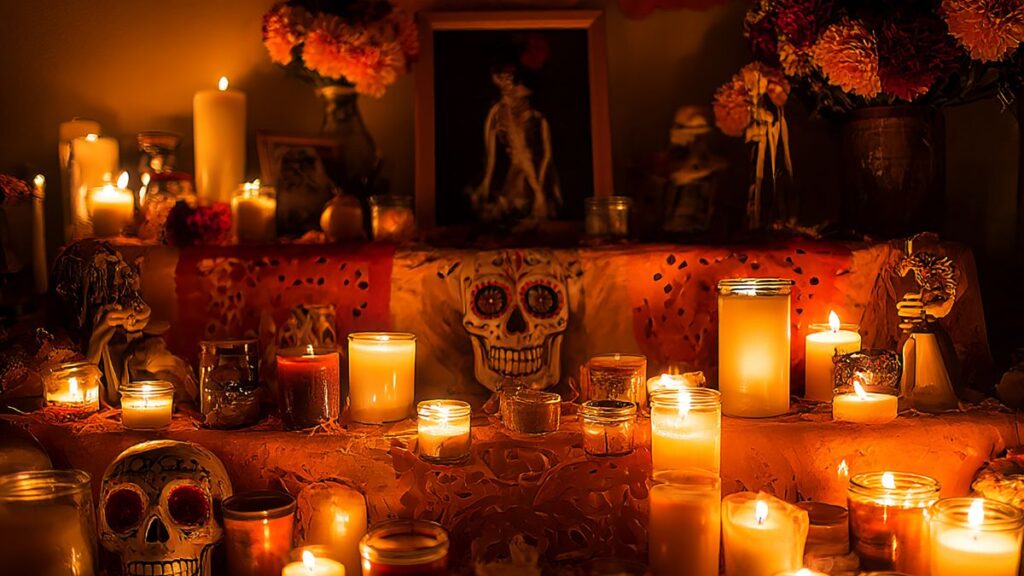
Many families decorate ofrendas, altars in their home, with pictures, candles, and the deceased’s favorite treats or trinkets. Everything has significance. Marigolds or cempasúchil are vibrant orange flowers believed to help guide spirits home with their color and fragrance.
Some bring music, food, and even toys for the deceased children. The bottom tier of the altar typically contains beloved food or beverages. Sugar skulls or calaveras combine humor and art. They remind us that life and death are intertwined.
Families unite, eat, pass stories, and laugh, embracing the dead as honored visitors. This is not as mementos to be put away. It’s this combination of reverence and celebration that makes Día de los Muertos unlike any other important holiday, including Halloween.

3. Where to Experience Día de los Muertos Festivals
Día de los Muertos comes alive in the colorful festivals that combine community, art and tradition. Countless cities throughout Mexico and the U.S. Open their doors to you with a variety of experiences that show what this mexican holiday means and how beautiful it is.
A. Top Destinations for Travelers
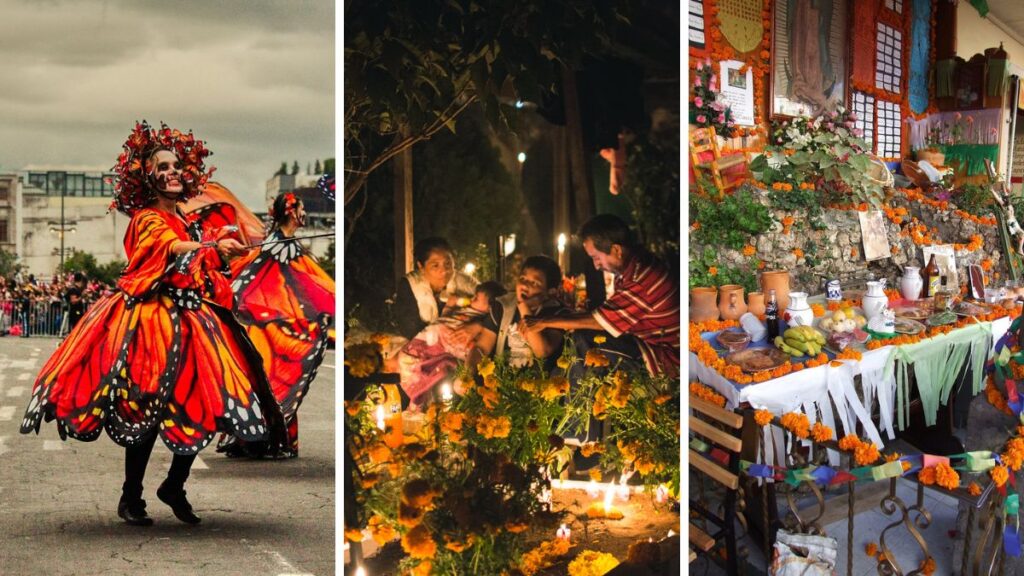
Mexico City is unrivaled for scale and energy. The spectacular Spectre-inspired grand parade animates the boulevards with floats, dancers, and giant skeleton puppets. Condesa neighborhood street parties and public altars attract locals and visitors alike.
Oaxaca has a more traditional vibe. You’ll encounter sand tapestries decorating plazas, processions bearing candles, and families visiting cemeteries after dark. In Pátzcuaro, the picturesque lakeside town in Michoacán, Janitzio Island burns bright with candlelit vigils that extend long into the night, providing a serenely haunting backdrop for contemplation.
San Miguel de Allende goes artistic with live music, masked dancers and public art. The city’s main square becomes a gathering place for local events and workshops. Mérida in the Yucatán combines Mayan and Mexican traditions during the Festival de las Ánimas. Expect dead parades, concerts, and local food stalls.
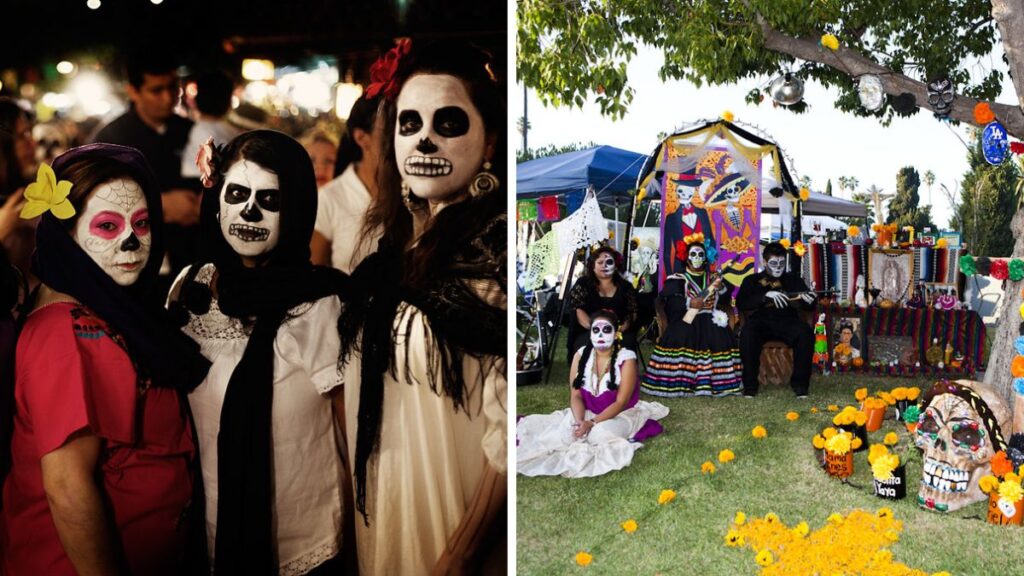
Outside Mexico, you’ll discover big celebrations in US border states. Old Town San Diego offers a vibrant parade, altar exhibits and street vendors selling Mexican cuisine. Olvera Street in LA offers face painting, live performances and community altars.
Hollywood Forever Cemetery’s ceremony includes concerts and elaborate ofrendas. New York City’s Staten Island is home to a major festival with music, food and a parade. Festival highlights to look for include parades, art exhibitions, altar displays, and workshops on crafts and face painting.
B. How Travelers Can Participate Respectfully
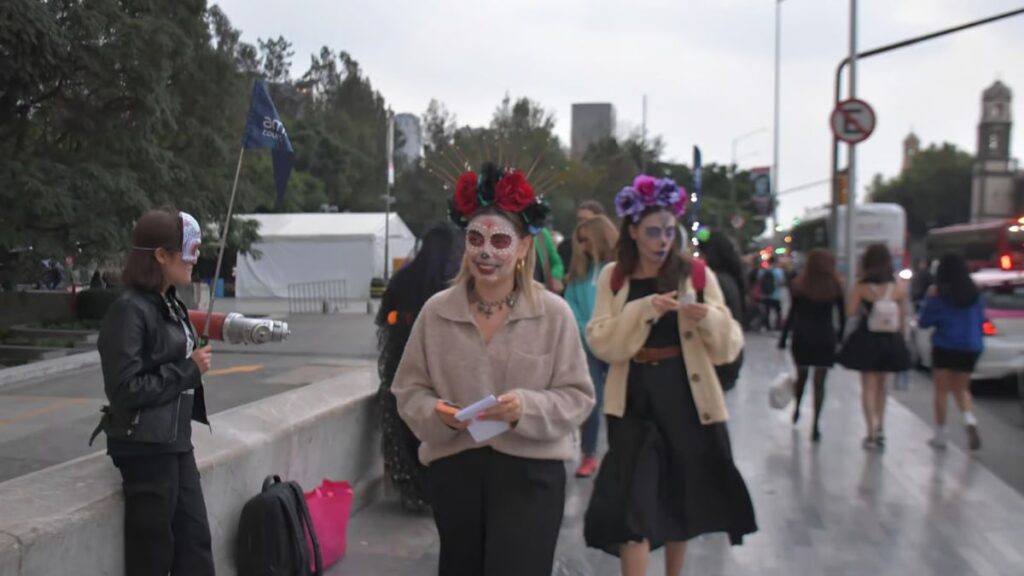
Join a guided tour or local workshop to learn the meaning behind rituals. This way you know what the symbols and rich traditions mean before you enter public celebrations.
Be sure to always ask before photographing altars or people. These displays are a personal tribute. Cemeteries, particularly at night, are hallowed ground. Be respectful and refrain from running around screaming.
If you’re lucky enough to be invited, bring some little offerings, such as flowers or candles. Leave them at the graves. This humble courtesy is one of respect. Keep in mind that your attendance is a courtesy, not an entitlement.
4. Travel Tips for Visiting Mexico During Día de los Muertos
Mixing Catholic and pre-Columbian customs, Día de los Muertos runs from October 31 to November 2. This event celebrates lost loved ones. It’s a celebration of altars, music, parades, and food.
If you want to enjoy the full benefits of the experience, it’s best if you plan ahead, respect the culture, and stay connected!
A. Plan Ahead for the Festive Rush
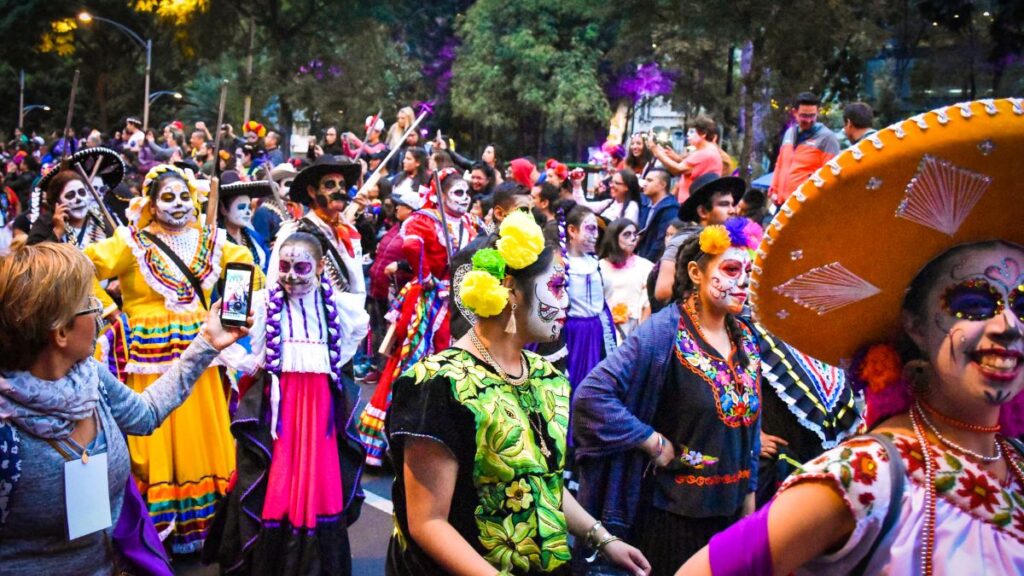
Hotels and transport get booked up weeks in advance of Día de los Muertos, particularly in Mexico City and Oaxaca. Reserve your accommodations and main travel in advance to save yourself last minute hassle or surges in price.
If you arrive a day or two before November 1, you can observe how the locals set up ofrendas and participate in community celebrations. Giant crowds are the status quo, with wild, high-energy parades such as the Mega Catrinas Parade.
Walking is usually the best way to get around downtown. If you’re commuting between events, opt for public transport or reliable local guides. Traffic is a crawl and certain streets close for celebrations.
B. Plan Your Internet Connectivity in Mexico with Ubigi eSIM

Dependable mobile data allows you to experience even more of Día de Muertos. You will want maps to track down processions, cemeteries, and the best places serving pan de muerto and tamales.
Live translation apps empower you to participate in ceremonies fearlessly. Publishing live pictures of the colorful costumes and marigold walls is simple with a robust connection. Ubigi eSIM is a genius pick for nomads.
You’re good to go, no store required. Flexible data plans work across Mexico (eg: 1GB Mexico data plan, 3GB Mexico data plans or 10GB Mexico data plan) and LATAM (eg: 1GB Best Latam, 3GB Best Latam, 25GB Best Latam or Unlimited Best Latam data plans).
The app makes topping up easy, even without Wi-Fi connexion or data credit left. Grab your Ubigi eSIM ahead of your adventures and remain connected all across the Día de los Muertos festival!
Conclusion
You get true happiness on Dias de Muertos. Streets illuminate with shining marigolds. Music is pumping. They laugh and tell stories.
You experience skull-painted faces and families creating ofrendas at home. It’s more than a public holiday! People celebrate family, combine cultural traditions old and new, and forge meaningful community bonds.
There are numerous Mexican villages that welcome you to partake. It’s the best way to taste sweet bread, watch parades, and learn from locals. You return with fond memories and a fresh perspective on life and loss.
To maximize your experience, prepare in advance and maintain an open mind. Begin your next adventure thinking Dias de Muertos.
We hope that this “Día de los Muertos: Dates, Traditions, and Festivals” helped you prepare your trip!

Frequently Asked Questions
What is Día de los Muertos?
Día de los Muertos, or Day of the Dead, is a mexican celebration of life and death, remembering those we love who are no longer with us. It mixes native and Spanish elements and is primarily observed in Mexico.
When is Día de los Muertos celebrated?
You feel Día de los Muertos every November 1st and 2nd. These days are for remembering children and adults who passed away.
Why do people build altars for Día de los Muertos?
Altars, or ofrendas, are set up to welcome the spirits. You’ll find photos, food, candles, and flowers, all as tributes to those who’ve passed.
Is Día de los Muertos the same as Halloween?
No, dias de muertos is not Halloween! They both take place in the late October and early November timeframe. Dia de los Muertos centers around honoring life and remembrance, not fright.
Where can you experience Día de los Muertos festivals?
Participate in colorful dead festivities in Mexico, in particular, Mexico City, Oaxaca, and Pátzcuaro. Communities around the world now hold public events and parades.
What foods are traditional for Día de los Muertos?
You’ll encounter traditional fare like pan de muerto (bread of the dead), sugar skulls, tamales, and the deceased’s favorites among the celebrations.
Is it respectful for visitors to join Día de los Muertos celebrations?
Yes, please join in if you respectfully do. Understand the dead traditions, request permission to photograph, and respect the essence of the celebration.



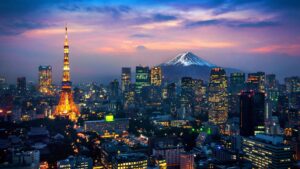
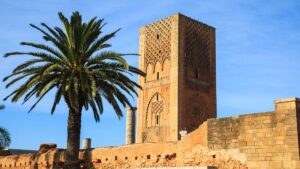



 Check eSIM compatibility
Check eSIM compatibility Check Carrier Unlock
Check Carrier Unlock